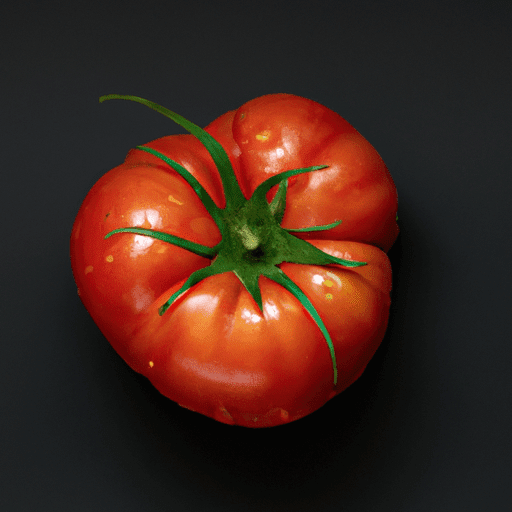Beefsteak Tomatoes: Bursting with Flavor and Versatile in the Kitchen
Beefsteak tomatoes are a staple in the culinary world, renowned for their robust flavor and versatility in various dishes. With their juicy flesh, vibrant color, and rich taste, they are a favorite among chefs and home cooks alike. In this blog post, we will explore the wonderful world of beefsteak tomatoes, from their mouthwatering flavor to their fascinating history and nutritional value.
Taste and Texture:
Beefsteak tomatoes are known for their exceptional flavor. When you take your first bite, you’ll experience a delightful balance of sweetness and acidity. The meaty texture of these tomatoes adds an extra layer of satisfaction, making each bite a joy to savor. Whether raw or cooked, the robust taste of beefsteak tomatoes becomes more pronounced with age, making them perfect for capturing the essence of summer in your dishes.
Common Uses in Cooking:
Due to their intense flavor and meaty texture, beefsteak tomatoes are incredibly versatile in the kitchen. Here are some popular ways to enjoy these gorgeous tomatoes:
Caprese Salad: Combine thick slices of beefsteak tomatoes with fresh mozzarella, basil leaves, and a drizzle of balsamic glaze for a classic and refreshing summer salad.
BLT Sandwich: Elevate the classic BLT by using thick slices of beefsteak tomatoes to complement the smoky bacon and crisp lettuce. Add a dollop of mayo and enjoy a burst of flavor with each bite.
Salsa: Create a vibrant and tangy salsa by dicing beefsteak tomatoes, red onions, jalapenos, cilantro, and a squeeze of lime juice. This salsa pairs well with tortilla chips, grilled meats, or as a topping for tacos.
Tomato Sauce: When it comes to making rich and flavorful tomato sauce, beefsteak tomatoes are the ideal choice. Simmer them with garlic, onions, and a blend of herbs to create a mouthwatering sauce that will elevate your pasta dishes to new heights.
Nutritional Value:
Apart from their incredible taste, beefsteak tomatoes are also packed with nutrients. They are an excellent source of vitamins A and C, potassium, and dietary fiber. These tomatoes are low in calories, making them a healthy addition to your diet. Additionally, beefsteak tomatoes contain lycopene, a powerful antioxidant known for its potential health benefits, including reducing the risk of certain cancers and promoting heart health.
History and Fun Facts:
The history of beefsteak tomatoes traces back to the late 19th century when they were first cultivated in the United States. These tomatoes earned their name from their large size and juicy, steak-like flesh. Over the years, they have become a beloved variety due to their flavor and the myriad of culinary possibilities they offer.
It’s interesting to note that beefsteak tomatoes can come in various colors, including red, pink, yellow, and even purple. Each color variation offers its own distinct flavor profile, adding another dimension to the world of beefsteak tomatoes.
Final Thoughts:
Beefsteak tomatoes are a true delight in the kitchen. Whether you’re using them to add a burst of flavor to a salad, make a fresh salsa, or create a rich tomato sauce, these tomatoes never disappoint. With their vibrant color and meaty texture, they are not only a feast for the taste buds but also a feast for the eyes. So don’t hesitate to grab some beefsteak tomatoes the next time you’re at the market and explore the endless culinary possibilities they have to offer.
Beefsteak tomatoes are a type of tomato that is known for its large size and meaty texture. Here are some interesting facts about beefsteak tomatoes:
Origin:
- Beefsteak tomatoes are believed to have originated in the United States, specifically in the mid-1800s.
- It is thought that the first beefsteak tomatoes were developed through natural mutations in smaller tomatoes.
Common Uses:
- Due to their large size and meaty texture, beefsteak tomatoes are commonly used for slicing and serving on sandwiches and burgers.
- They are often enjoyed fresh in salads, adding a juicy and robust flavor.
- Beefsteak tomatoes are also used for cooking, including making sauces, salsas, and soups.
Nutritional Benefits:
- Beefsteak tomatoes are a good source of vitamins A and C.
- They also contain fiber, potassium, and antioxidants.
- Like other tomatoes, beefsteak tomatoes are low in calories and fat.
Unique Properties and Historical Significance:
- Beefsteak tomatoes are distinct for their large size, often reaching over one pound in weight.
- The name “beefsteak” comes from the tomato’s resemblance to a thick, juicy steak.
- Due to their popularity, beefsteak tomatoes have become a staple variety of tomato in many parts of the world.
- Over time, various cultivars of beefsteak tomatoes have been developed, each with their own unique flavor and characteristics.
These factual details provide insight into the origin, uses, nutritional benefits, and distinctive features of beefsteak tomatoes, without introducing any opinions or personal commentary.




Use the share button below if you liked it.
It makes me smile, when I see it.